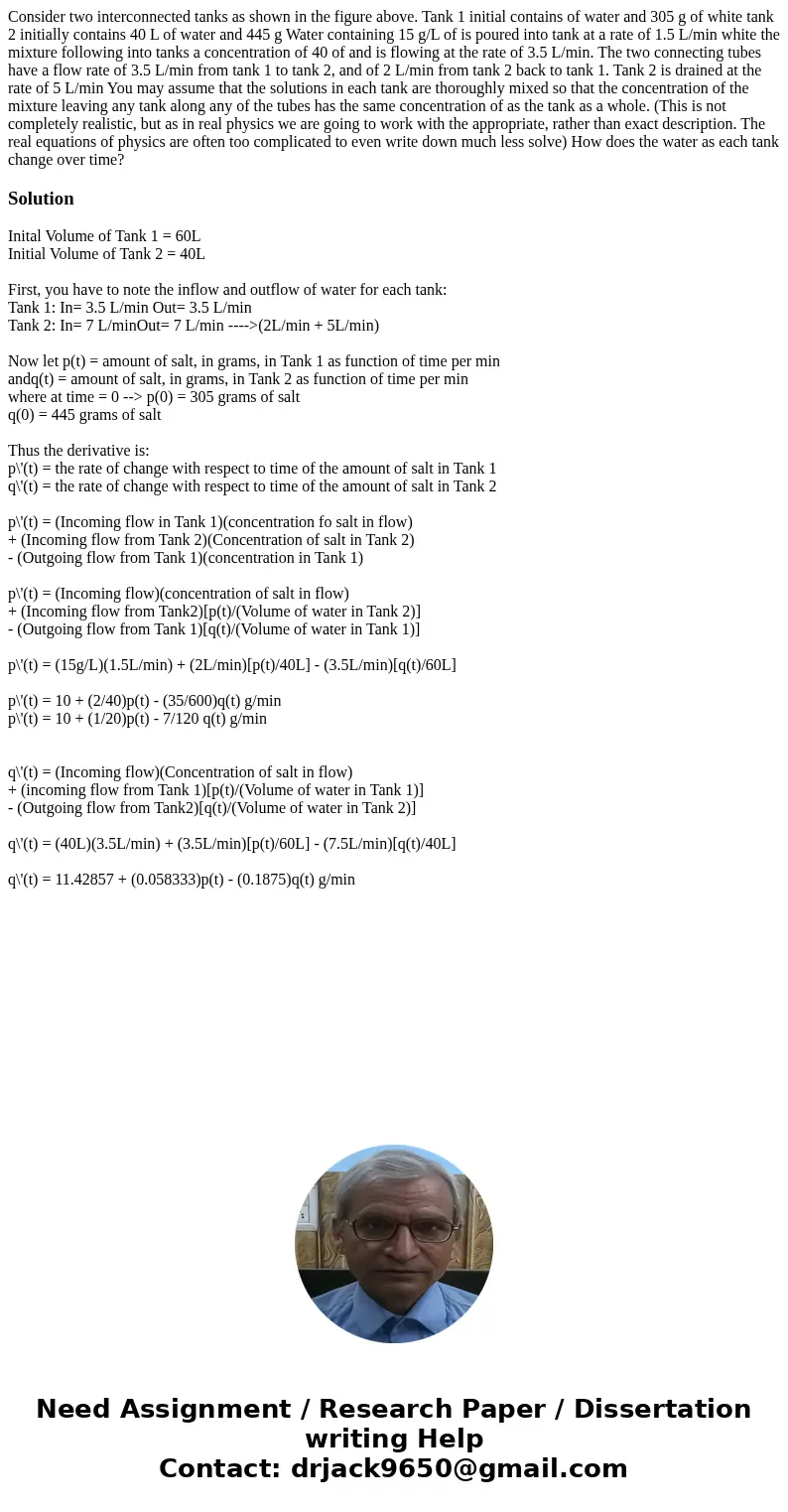Consider two interconnected tanks as shown in the figure abo
Solution
Inital Volume of Tank 1 = 60L
Initial Volume of Tank 2 = 40L
First, you have to note the inflow and outflow of water for each tank:
Tank 1: In= 3.5 L/min Out= 3.5 L/min
Tank 2: In= 7 L/minOut= 7 L/min ---->(2L/min + 5L/min)
Now let p(t) = amount of salt, in grams, in Tank 1 as function of time per min
andq(t) = amount of salt, in grams, in Tank 2 as function of time per min
where at time = 0 --> p(0) = 305 grams of salt
q(0) = 445 grams of salt
Thus the derivative is:
p\'(t) = the rate of change with respect to time of the amount of salt in Tank 1
q\'(t) = the rate of change with respect to time of the amount of salt in Tank 2
p\'(t) = (Incoming flow in Tank 1)(concentration fo salt in flow)
+ (Incoming flow from Tank 2)(Concentration of salt in Tank 2)
- (Outgoing flow from Tank 1)(concentration in Tank 1)
p\'(t) = (Incoming flow)(concentration of salt in flow)
+ (Incoming flow from Tank2)[p(t)/(Volume of water in Tank 2)]
- (Outgoing flow from Tank 1)[q(t)/(Volume of water in Tank 1)]
p\'(t) = (15g/L)(1.5L/min) + (2L/min)[p(t)/40L] - (3.5L/min)[q(t)/60L]
p\'(t) = 10 + (2/40)p(t) - (35/600)q(t) g/min
p\'(t) = 10 + (1/20)p(t) - 7/120 q(t) g/min
q\'(t) = (Incoming flow)(Concentration of salt in flow)
+ (incoming flow from Tank 1)[p(t)/(Volume of water in Tank 1)]
- (Outgoing flow from Tank2)[q(t)/(Volume of water in Tank 2)]
q\'(t) = (40L)(3.5L/min) + (3.5L/min)[p(t)/60L] - (7.5L/min)[q(t)/40L]
q\'(t) = 11.42857 + (0.058333)p(t) - (0.1875)q(t) g/min

 Homework Sourse
Homework Sourse